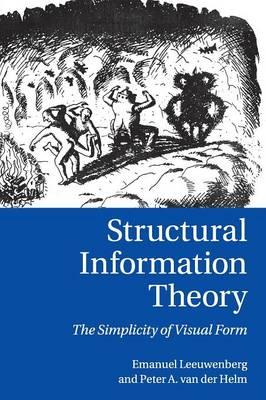Overview
Structural information theory is a coherent theory about the way the human visual system organises a raw visual stimulus into objects and object parts. To humans, a visual stimulus usually has one clear interpretation even though, in theory, any stimulus can be interpreted in numerous ways. To explain this, the theory focuses on the nature of perceptual interpretations rather than on underlying process mechanisms and adopts the simplicity principle which promotes efficiency of internal resources rather than the likelihood principle which promotes veridicality in the external world. This theoretically underpinned starting point gives rise to quantitative models and verifiable predictions for many visual phenomena, including amodal completion, subjective contours, transparency, brightness contrast, brightness assimilation and neon illusions. It also explains phenomena such as induced temporal order, temporal context effects and hierarchical dominance effects, and extends to evaluative pattern qualities such as distinctiveness, interestingness and beauty.
Full Product Details
Author: Emanuel Leeuwenberg (Radboud Universiteit Nijmegen) ,
Peter A. van der Helm (Radboud Universiteit Nijmegen)
Publisher: Cambridge University Press
Imprint: Cambridge University Press
Dimensions:
Width: 23.00cm
, Height: 2.00cm
, Length: 15.00cm
Weight: 0.490kg
ISBN: 9781107531758
ISBN 10: 1107531756
Pages: 340
Publication Date: 02 July 2015
Audience:
Professional and scholarly
,
Professional & Vocational
Format: Paperback
Publisher's Status: Active
Availability: Manufactured on demand

We will order this item for you from a manufactured on demand supplier.
Reviews
'Whether you are familiar with Structural Information Theory or not, you will enjoy this systematic presentation by Emanuel Leeuwenberg, its original proponent, and Peter van der Helm, its main formal developer. Through twelve chapters, including a coding manual, they distil order out of perception and cognition, like the demons invoked in the introduction. SIT provides a powerful language for evaluating how strongly the mind strives for simplicity; the book provides an optimal context for evaluating the strength of SIT.' Walter Gerbino, University of Trieste 'Leeuwenberg and van der Helm have assembled the definitive statement on their influential theory of the coding of visual forms. SIT is the most thorough system available for capturing the essence of a structure's simplicity, so this volume will be required reading for those interested in this far-reaching and quintessentially Gestalt concept.' James Pomerantz, Rice University
Author Information
Dr E. L. J. Leeuwenberg is Emeritus Associate Professor at the Donders Institute for Brain, Cognition and Behaviour at Radboud University Nijmegen, The Netherlands. Peter A. van der Helm received his Bachelor's degree in Fundamental Mathematics (1979) and Master's degree in Numerical Mathematics (1981, Cum Laude) from the Department of Applied Mathematics at the University of Twente, and his PhD in Social Sciences (1988, Cum Laude) from the Department of Cognitive Psychology at Radboud University Nijmegen. He has been a Fellow of both the Netherlands Organisation for Scientific Research and the Royal Netherlands Academy of Arts and Sciences. He continued his research as Assistant Professor at the Donders Institute for Brain, Cognition and Behaviour at Radboud University Nijmegen, and is now Visiting Professor at the Laboratory of Experimental Psychology, University of Leuven. His research on human vision is pre-eminently multidisciplinary and resulted in theoretical and empirical articles which have been published in leading journals. His broad interest is also reflected in his activities to enhance public awareness of the plight of West-Malaysian indigenous people, called Orang Asli.




